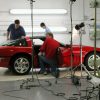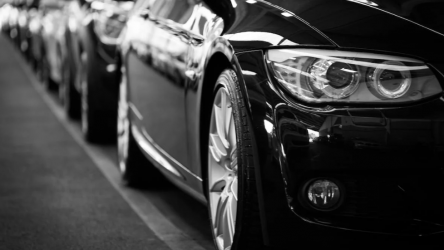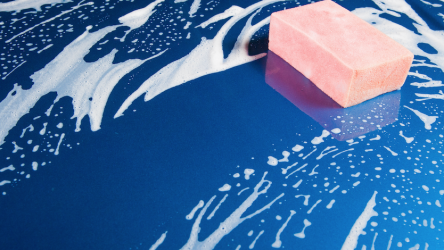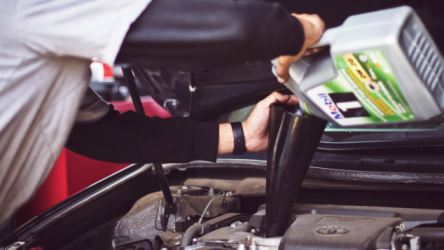
Most cars contain brakes that perform a sufficient job of stopping the car, even during panic situations. Still most stock car brake systems are not proficient at braking, leaving room for improvement with aftermarket upgrades.
Most drivers think brakes only help them stop their car. While brakes obviously perform this function, the fact is that brake systems also help cars perform cornering maneuvers and to slow down while descending a hill or performing other maneuvers. Drivers who intend to race their car on a track need improved braking performance to consistently slow the car down enough to make the different turns without losing control and crashing.
All modern car brake systems rely on hydraulic pressure. In disc brake systems when you step on the brake pedal the hydraulic brake fluid in the brake lines exerts pressure on the brake calipers, which are like giant metal clamps that sit on either side of rotor. The calipers hold brake pads on each side of the rotor. The pressure from the brake lines causes the rotors to clamp down on the rotors, slowing the forward progress of the car through friction. This friction of course builds up tremendous heat which can actually reduce how much fiction the brake pads generate when they touch the rotors, lessening the car’s braking power.

Many cars come with ventilated brakes. This means there are channels cut into the edges of the rotors, or the surface not contacted by the brake pads, allowing heat built up in the rotor to flow out. Some high-performance cars and aftermarket brake rotors come with holes drilled into the rotors or grooves carved into the surface where the brake pads make contact, further helping dissipate heat and improving the car’s braking power.
Cars with disc brakes often generate a fine black dust that coats the wheels. This dust is called brake dust and literally comes from the worn down brake pads. Brake dust is completely normal and not a cause for concern, but it can cause a squealing noise that sometimes concerns car owners. Cleaning the brake system with compressed air will usually remove the brake dust and stop the squealing, if only temporarily.
The calipers that are part of a car’s disc brake system contain pistons or “pots” that apply pressure to both sides of the calipers. The more pistons contained in a caliper, the more pressure the caliper can use to squeeze the rotors, slowing the car down faster. Having two pistons versus one per caliper essentially doubles the pressure being exerted on the rotors. Some high-performance cars and aftermarket calipers come with six or more pistons each, providing plenty of stopping power. To provide enough increased pressure to aftermarket brake calipers with more pistons, car owners must also install higher-capacity brake lines and a high-capacity master brake cylinder.
Besides being able to choose from discs that are cross-drilled, slotted and ventilated, car owners can also choose discs that are made of different materials. Steel is what comes on most cars since it is economical and fairly durable. Expensive cars and aftermarket brake systems can come with rotors and pads made of more heat-resistant and durable materials like ceramic.
Even though they are more durable, drum brakes do not provide the performance or maintenance benefits of disc brakes. With drum brakes, several shoes contained inside the drum press against the sides of the drum when brake pressure is applied. These brake shoes are more durable than the pads used with disc brakes, but they do not provide as much pressure and stopping ability. Also, servicing drum brakes is difficult because of the system of springs that hold the shoes in place, making disc brakes far easier for the average car owner to service himself.
Not sure what you really need for your own car? Click here to learn more about how to find the best parts for your car, truck, RV, or trailer!





